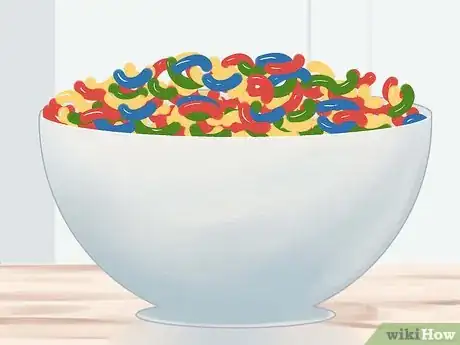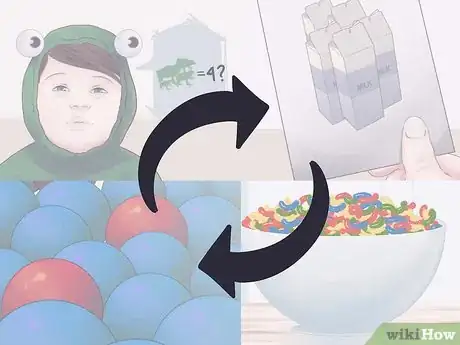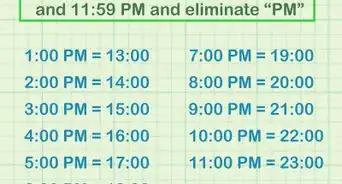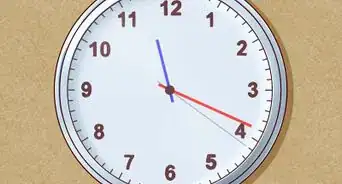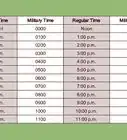X
wikiHow is a “wiki,” similar to Wikipedia, which means that many of our articles are co-written by multiple authors. To create this article, volunteer authors worked to edit and improve it over time.
This article has been viewed 45,671 times.
Learn more...
Estimation is an essential skill. It’s a good idea to teach your children estimation early in life, so they will understand it as soon as possible and begin to refine their abilities. Young children may, however, struggle with the concept. Fortunately, there are a number of ways to teach estimation to children, such as explaining the concept of estimation, and using fun activities to employ the skill.
Steps
Method 1
Method 1 of 2:
Explaining the Concept of Estimation
-
1Explain that estimation is like guesswork. Your child is probably already familiar with the concept of guessing. Explain that estimating is similar, but that the goal is to make educated guesses that are as accurate as possible. Learning how to estimate effectively will let you save time and energy in situations where an exact number is unnecessary.
-
2Give examples. If you pay attention, you’ll see examples of estimation frequently in your daily life. You might, for example, estimate how much your grocery bill will be, how long it will take you to drive somewhere, or how many cups of milk are left in the carton. Explain these examples to your child in a developmentally appropriate way.
- When you give these examples, it can help to explain why estimating, rather than calculating, is appropriate in the particular context. Tell your child, for example, that if you needed to know exactly what your grocery bill would be, you could add up all the prices and get a precise number, but, in this case, you’re only trying to get an approximate number so that you don’t spend too much.
Advertisement -
3Use flash cards. To reinforce the concept, show your child a flash card or picture with multiple objects on it: animals, toys, whatever your child likes. Show the card to your child, but not for long enough to count the objects, then ask your child to estimate the number. Give high scores to close estimates. Repeat the game until your child seems to understand the concept.
Advertisement
Method 2
Method 2 of 2:
Teaching Estimation Strategies with Fun Activities
-
1Focus on activities that interest your child. Every child is different, so tailor your activities to suit your child’s particular interests. Make these activities fun! Children tend to have tons of energy but minimal attention spans, so it’s important for the activities you choose to entertain them.
-
2Teach visual isolation. Your child may struggle to filter out unnecessary information and focus only on the subject to be estimated. You can teach this skill with simple games. For example, you might put red and blue balls on the floor, then ask your child to guess how many red balls there are (ignoring the blue ones).
-
3Play guessing games. You can have your child guess how many jelly beans are in a bowl, how many pennies are in a jar, or how many marbles are in a box. Emphasize the need for estimation, not counting or calculation.
- There are online games that help teach estimation as well. For example, your child can play “Guess It!” at http://www.theproblemsite.com/junior/estimation.asp, where Professor Puzzler will show various groups of colored dots, then take them away and ask for an estimation. This site will let you increase or decrease the amount of time the dots stay on the screen, too, letting you customize the game for your child.
-
4Emphasize the vocabulary of estimation. Explain to your child that when people estimate, they use words like “about,” “approximately,” or “more or less.” When you play guessing games, encourage your child to use these words and to construct sentences that reflect estimation.
-
5Teach your child to strategize. Remind your child that estimation is not about random guessing; it’s about making educated predictions. Instead of throwing out random numbers, he or she should use visual cues to get as close as possible.
-
6Be persistent. Repetition is key. Children need to practice these skills over and over again in order to master them. Vary the activities so that your child does not get bored, but don’t give up on teaching estimation.
-
7Reward your child’s progress. Children will be more interested and motivated if you offer a reward. If you play a guessing game with jelly beans, for example, you can give your child a few to eat when he or she makes a good estimate. If you use pennies, let your child keep them if he or she does well.
Advertisement
Community Q&A
-
QuestionWhat if I don't know how to estimate myself as a parent?
 Community AnswerWhat better time to learn? It's okay to admit that you don't have all the answers, and doing so will even set a good example for your child. Do what you would normally do if you don't know the answers. Look it up or ask someone...! Learning alongside your child can be fun, and teaching them how to find answers is actually a great life skill.
Community AnswerWhat better time to learn? It's okay to admit that you don't have all the answers, and doing so will even set a good example for your child. Do what you would normally do if you don't know the answers. Look it up or ask someone...! Learning alongside your child can be fun, and teaching them how to find answers is actually a great life skill. -
QuestionDoes five round up or down?
 Community AnswerFive rounds up. Any number below five rounds down. Five and all numbers above are rounded up.
Community AnswerFive rounds up. Any number below five rounds down. Five and all numbers above are rounded up. -
QuestionHow can you develop estimation skills in the lower grades?
 CaTsArEsOcUtECommunity AnswerStart with teaching the students to 'round up' by using a common method used to teach rounding called 'over 5'. This method takes a double-digit number, and if the number in the ones place is over 5, you round up to the next number. For example: 87 can be rounded to 90. 84 can be rounded to 80 because the number in the ones place is below 5.
CaTsArEsOcUtECommunity AnswerStart with teaching the students to 'round up' by using a common method used to teach rounding called 'over 5'. This method takes a double-digit number, and if the number in the ones place is over 5, you round up to the next number. For example: 87 can be rounded to 90. 84 can be rounded to 80 because the number in the ones place is below 5.
Advertisement
References
About This Article
Advertisement





